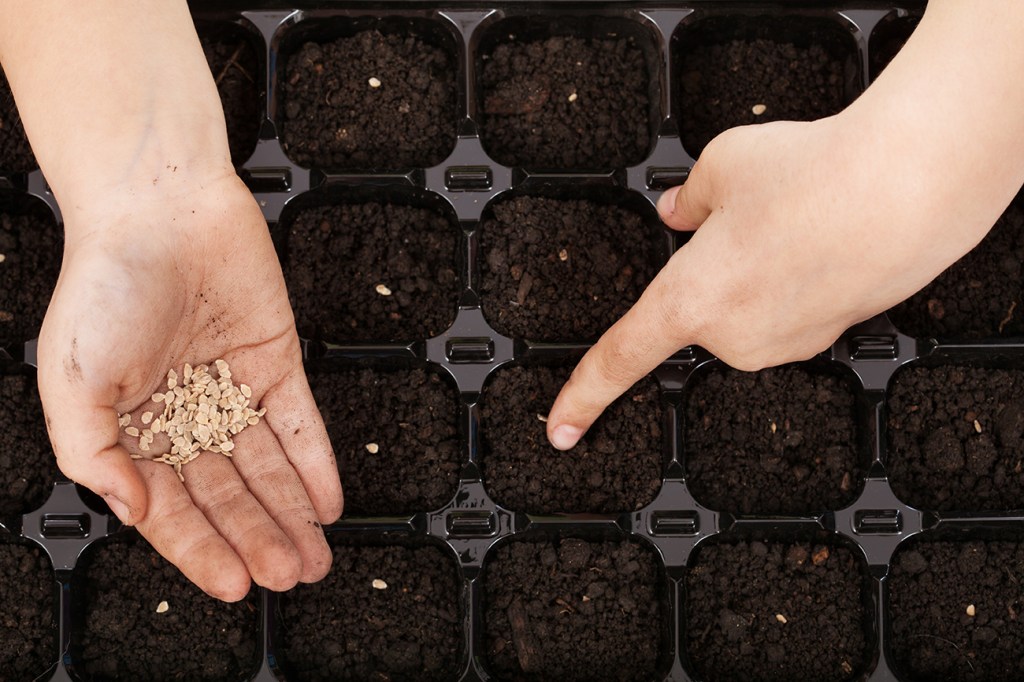ONE GARDENER TO ANOTHER: Starting summer vegetables from seed
Published 6:45 am Sunday, January 19, 2020

- Seeds
This week, I planted more than 300 seeds of 10 different varieties of tomatoes and peppers. I’ll start a couple hundred seeds of other vegetables in the next few days.
I don’t keep them all. The majority are being grown for donation to the Master Gardeners’ spring plant sale, although a few will make it into my garden beds and into the hands of a few friends.
Trending
It may seem a little early to start summer vegetables, but it’s about that time. I am starting my plants a little early by design. I want large, mature plants to put into my garden and to pass on for the sale. I will be repotting them multiple times and keeping them in a greenhouse environment for the majority of their maturation time.
Seeds are generally started indoors between 6 and 10 weeks before the predicted last frost, at which time they are transplanted outdoors. This takes into consideration the time it takes to harden off the plants before relocating them in their forever home.
While mature vegetable plants are generally stocked in stores around the time they should be planted (and this is not always the case), packages of seeds arrive all together, regardless of growing season.
Hardy and semi-hardy plants should be planted in early spring and again in late summer for spring and fall harvests. Many plants in this category develop better flavor when allowed to mature in cooler weather. These plants include broccoli, Brussels sprouts, cabbage, collards, English peas, kale, kohlrabi, leeks, mustard greens, radish, spinach and turnips.
Summer vegetables are planted in spring after the threat of frost has passed. Being that our last frost is normally around the middle of April, starting seeds eight weeks before that would be around Feb. 5.
The time it takes the seeds to germinate and grow strong enough to be transplanted varies. Okra can be started 4 to 6 weeks before the last frost, and tomatoes, 6-8 weeks. On the other hand, peppers and eggplant should be started 8 to 10 weeks before being moved outdoors.
Trending
The plants that fall into the summer annual category for vegetables include beans, cucumbers, eggplant, gourds, melons, okra, peppers, pumpkins, southern peas, summer squash, sweet potatoes, tomatoes and zucchini.
Since I start so many, I start my seeds in seed trays that have 256 tiny little holes. However, seeds can be started in egg cartons, small paper cups, yogurt cups, biodegradable pots — anything that can hold potting soil and has holes in the bottom for drainage.
The medium for starting seeds is a soilless potting mix that is lightweight, allowing tender seedling roots to spread easily. The potting mix — a combination of peat moss, vermiculite and/or perlite — helps hold nutrients and water and improves air circulation. Seeds can also be started in seed pellets, which expand when warm water is added and form a combination pot and soil all-in-one.
To plant seeds, mix the potting medium with water to moisten before filling containers. Drop a few seeds on top of the soil and cover with a thin layer of soil. Mist lightly with a spray bottle.
Containers can be covered with plastic wrap or clear plastic bags. This will provide a greenhouse effect, holding heat and moisture. The clean, plastic containers that strawberries come in make perfect little greenhouses. Condensation will form inside the makeshift greenhouse and help keep the soil moist as the seeds germinate, but keep an eye out for mold growth.
Once the seeds germinate, the plastic should be removed. Don’t allow soil to dry out too much, but avoid overwatering. A small drink of water just when the soil starts to dry, once or twice a week, should be enough.
These new little seedlings need approximately 6 to 8 hours of sunlight per day. Rotate containers every day since seedlings will tend to bend toward the light. If using a grow light, place the light as close to the seedling as possible, within 2 to 4 inches, and adjust as the plant grows.
Once the seedlings start to mature, they can be transplanted to larger containers. After about 6 to 8 weeks, pinch off the top leaves to encourage the plant to bush out.
Seeds, when properly stored, can last up to three years, making them an economical choice as well as giving the gardener a wide array of vegetable varieties to choose from that may not be available at local stores.
Until next week, happy gardening.
— Irland, a member of the Limestone County Master Gardeners, can be reached at kippirland@hotmail.com. Visit http://mg.aces.edu/limestone for more information on the Limestone County Master Gardeners.






